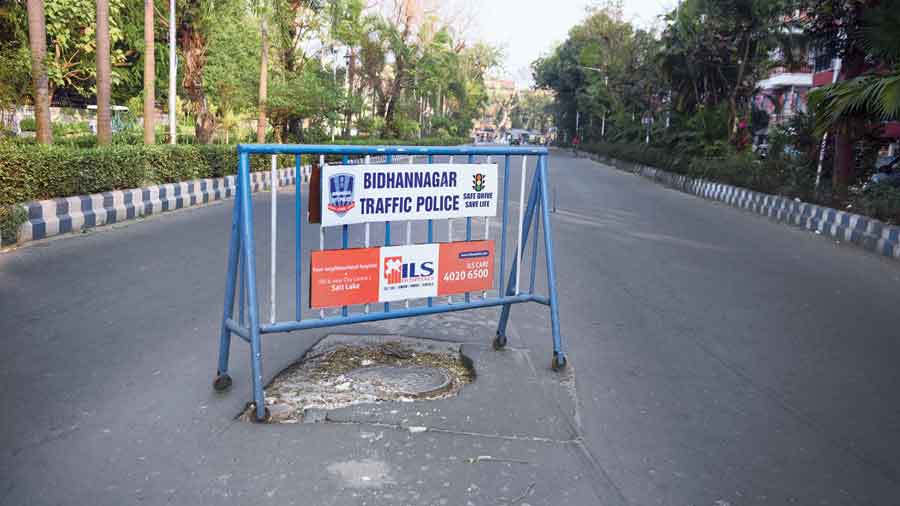The traffic police in Salt Lake have started placing guardrails and traffic cones to mark deep potholes and craters in order to prevent motorists and riders from driving over them.
Potholes pave most main roads in Salt Lake - including Broadway, which connects the township with EM Bypass; First Avenue, which links Ultadanga station to Salt Lake; and Second Cross Road.
There are also stretches on the roads where the surface has caved in.
An official of the road repairs and upkeep department of the Bidhannagar Municipal Corporation said there were no immediate plans to relay the roads.
The civic body had failed to relay the roads in Salt Lake and adjoining areas, including Baguiati, Kestopur and Rajarhat, ahead of the civic polls on February 12.
An official of the civic body said the roads were likely to be repaired once the newly elected councillors were sworn in. “A decision on road repairs will be taken only after the new board of councillors meets. The repairs are unlikely to start before the second half of March,” the official said.
The Trinamul Congress has won 39 of the 41 wards of the Bidhannagar civic body.
“The roads in the township are in a poor state. We have to be extremely careful while driving as some of the potholes are so deep that cars and two-wheelers can suffer serious damage if wheels fall into them,” said Sharmila Chakraborty, a resident of DL Block.
Another official said the only way to prevent more potholes from appearing and more cave-ins was to scrape off the surface, add a layer of brick pieces and soil to reinforce the base and then relay the stretches with asphalt.
A Kolkata Metropolitan Development Authority (KMDA) engineer said a road surface laid with mastic asphalt or concrete outlast a surface redone with bitumen.
Mastic asphalt could be laid within a short period and even in between spells of rain.
But the civic authorities keep preferring patchwork to other options.
An engineer said: “A concrete road is three times costlier to build compared with a bitumen stretch. But a concrete road lasts two decades, while that of bitumen lasts a few months. A mastic asphalt road costs double and lasts around five years.”
Around Rs 4 crore is required to build a kilometre of mastic asphalt road.
Sabyasachi Dutta, a former mayor of the corporation who has won from Ward 41 on Trinamul ticket, said: "We will start urgent repairs at the earliest.”
